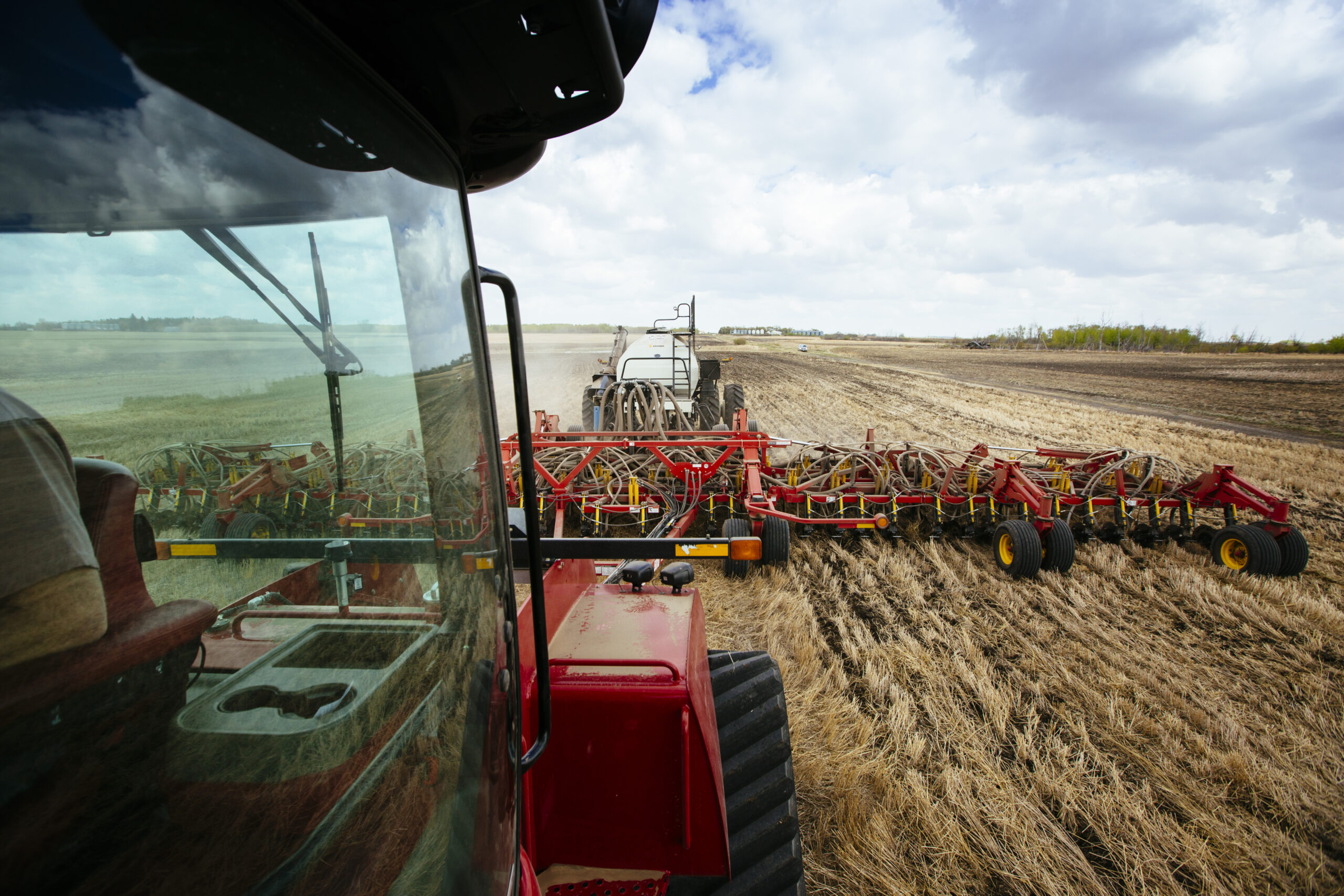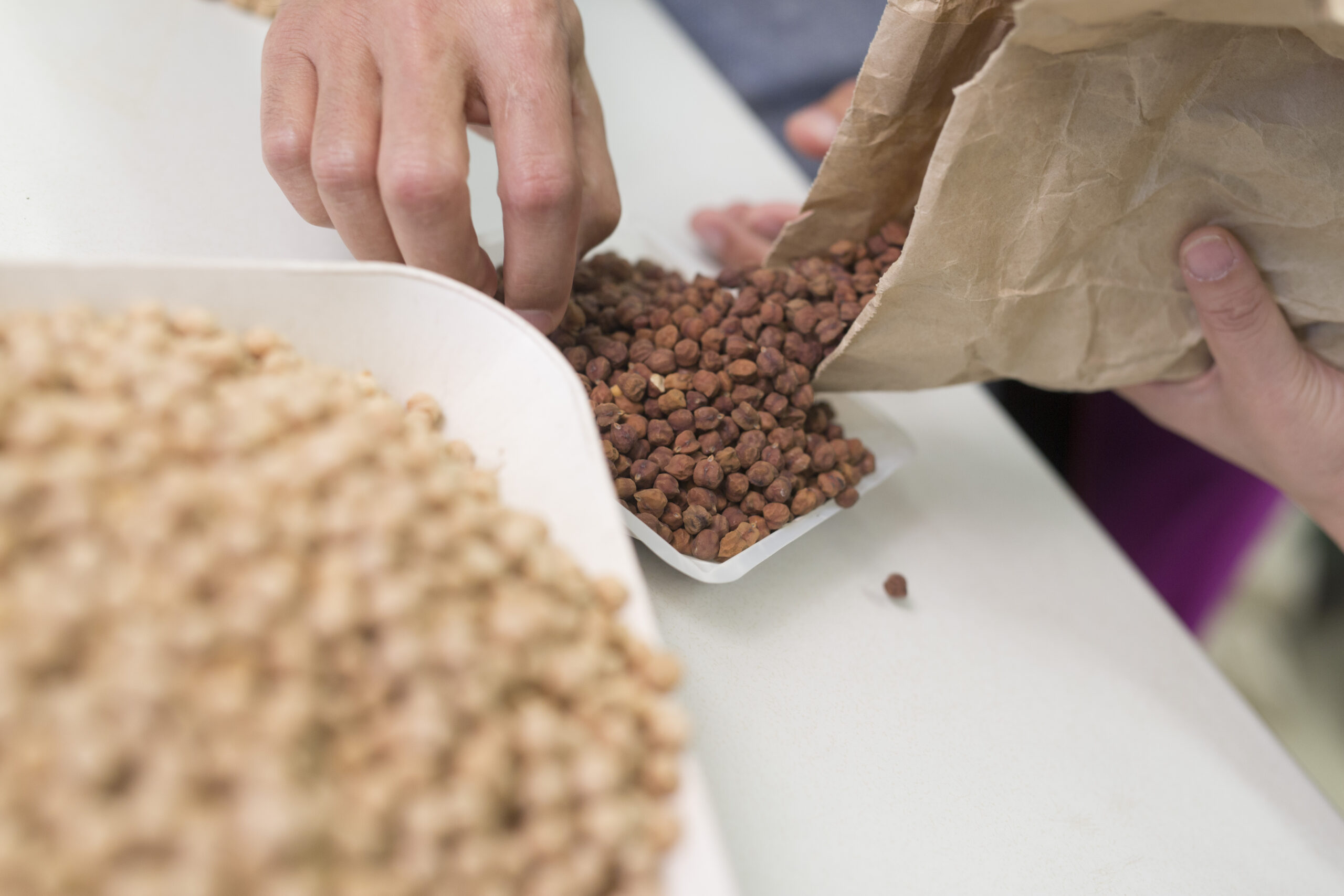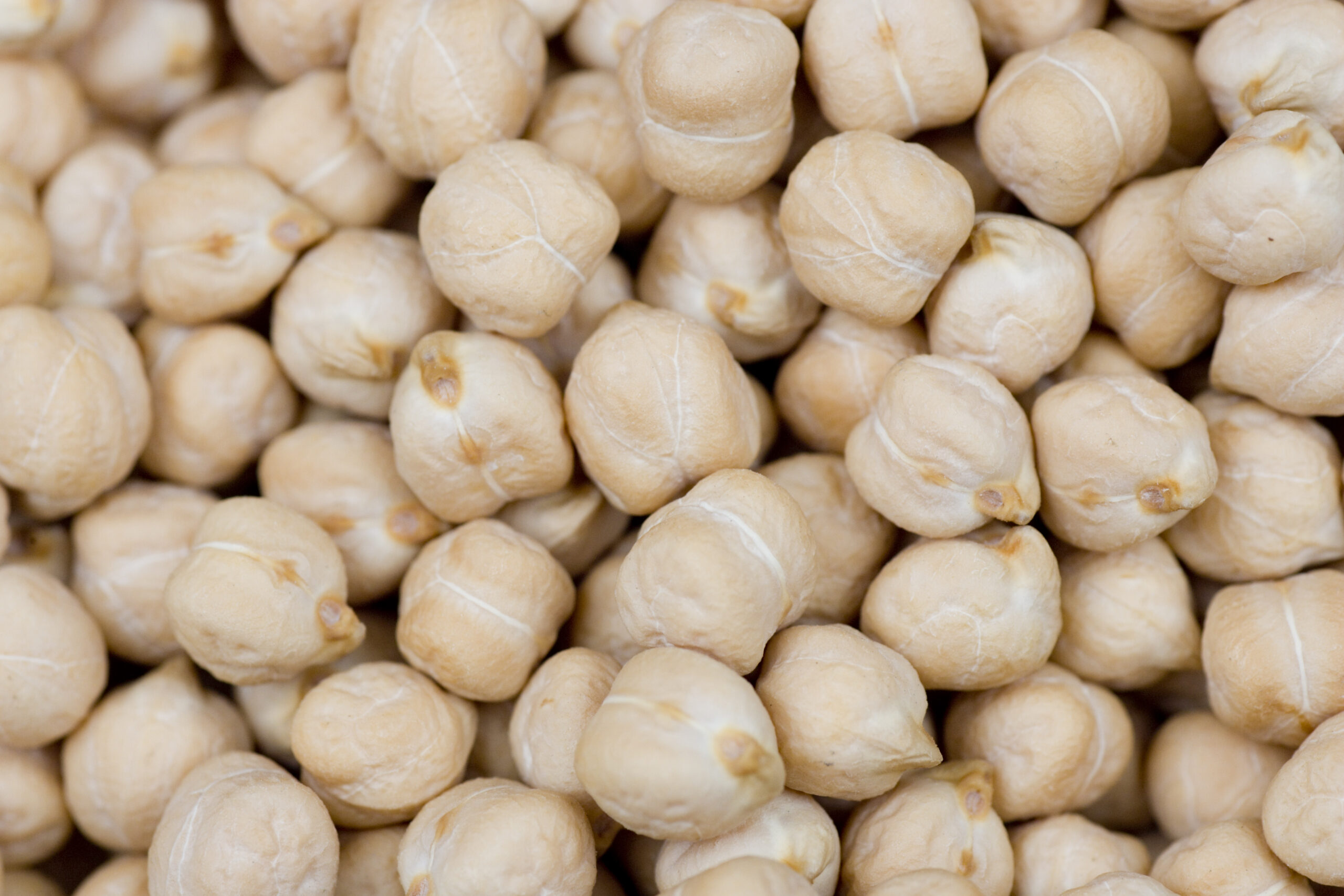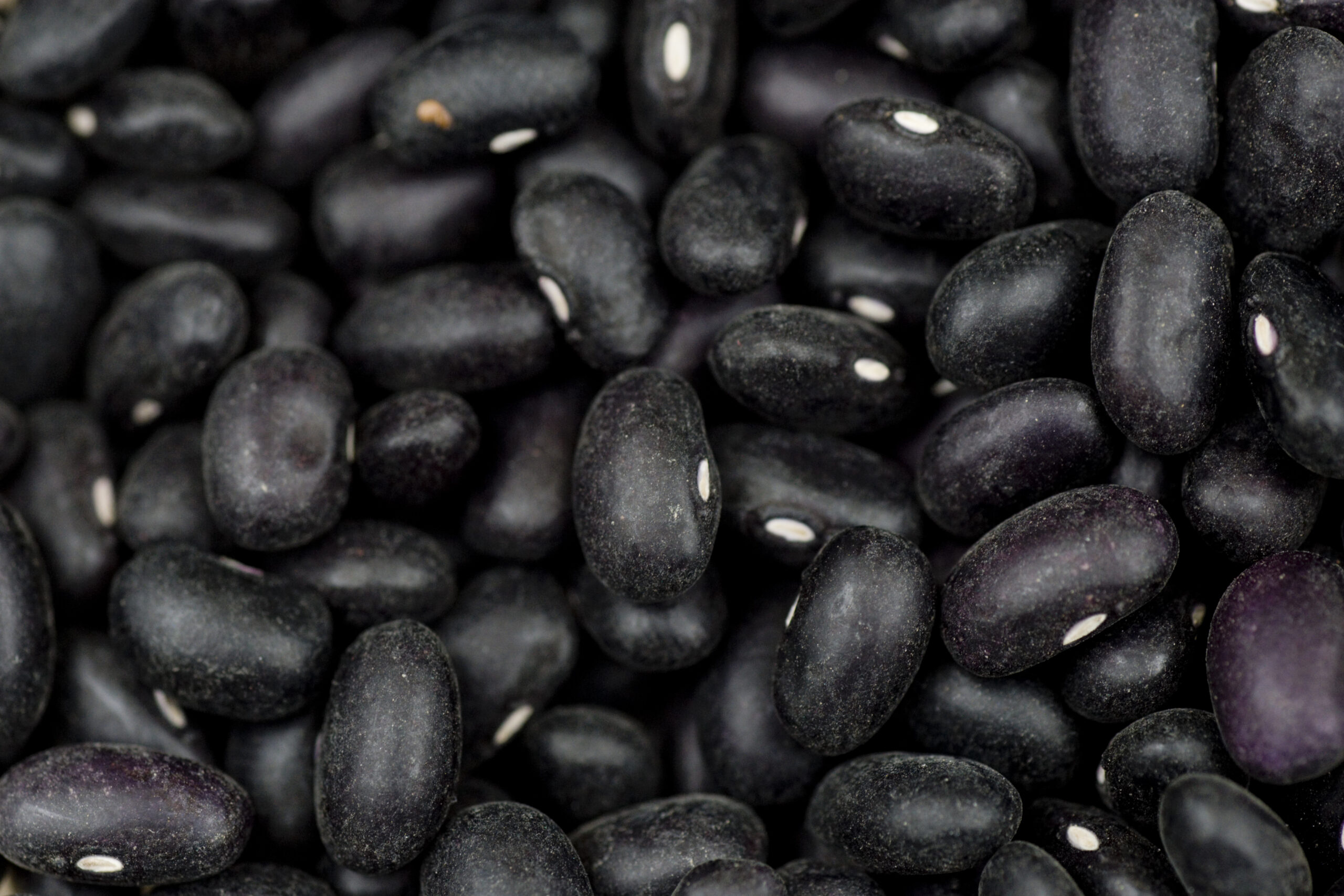Plant populations set the stage for the yield potential of a crop. Research has shown that each crop has an optimum plant density range that producers should target when seeding their crop (Table 1). Rates may be adjusted depending on the conditions in the field, date of seeding, weed pressure, seed placed fertilizer, and other pressures that may affect emergence or plant stand. With high weed pressure, for example, research has shown that growers can increase the seeding rate of most pulses to increase competitiveness.
To calculate seeding rates based on target plant populations (Figure 1) growers need the germination rate, seed size (thousand kernel weight in grams or TKW), and expected survival rates of the seed lot that they are planning to seed.
Plant Population
Target plant populations are based on research findings that identify the plant population required to optimize yield by crop. Economics were considered in developing the recommendations and were based on typical seed costs and prices for harvested grain. Higher costs of seed may mean the target population for optimum returns could be lower than recommended. Higher grain prices may mean the opposite as every bushel gain in yield could lead to higher returns.
Thousand Kernel Weight
Varieties and seed lots can vary significantly in seed size so it is important to know the seed size of the actual seed lot you are planning to seed. Not knowing your TKW could mean seeding too heavy and spending more on seed than needed, or seeding too light and limiting yield potential.
Emergence Rate
Emergence rate is more difficult to estimate as it is dependent on germination and environmental conditions. Expected seedling survival is typically 5-15% less than the germination rate with pulses – more under ideal conditions and less under adverse conditions. Factors to take into account when determining the expected seedling survival are seeding date, soil temperature, moisture and texture, as well as possible soil-borne diseases and insect pressures. The amount of seed-placed fertilizer and the seeding depth are factors that can also affect seedling survival.
Most pulses have thin seed coats which also make them susceptible to cracking during handling or through the air systems at seeding time and both can dramatically affect emergence.
![Seeding rate in kilograms per hectare = [Thousand kernel weight in grams x Target plant population (number per square metre)] / [% expected emergence (ex. 85)] To convert to seeding rate in pounds per acre (lb/ac) = Seeding rate (kg/ha) x 0.89](https://saskpulse.com/wp-content/uploads/2023/04/Seeding-rate-in-kilograms-per-hectare-1024x229.png)
To convert to seeding rate in pounds per acre (lb/ac) = Seeding rate (kg/ha) x 0.89
Example Calculation: CDC Amarillo yellow peas have a target plant population of 85 plants per square metre (m2). A seed lot with a TKW of 235 grams, and germination at 98% under good emergence conditions (using 88% emergence, which is 10% less than the germination rate), would have a target seeding rate of 85 x 235 / 88 = 227 kg/ha (to convert to lb/ac x .89 = 202 lb/ac or 3.4 bu/ac).
Table 1. Target Plant Populations for Pulse Crops in Saskatchewan
| Crop | Target Plant Population (per square metre) | Target plant population (per square foot) | Average TKW (grams) |
|---|---|---|---|
| Chickpeas |
40-45 (Kabuli) 35-40 (Desi) |
4 3-4 |
220-425 |
| Dry Beans |
Narrow-row (dryland) 36 (black and navy) 21 (pinto) Wide-row (irrigated) 25-30 |
3.3 2 2.3-2.8 |
160-200 300-380 |
| Lentils1 | 130-190 | 12-17 | 25-80 |
| Faba Beans | 45 | 4 | 325-750 |
| Peas | 85 | 8 | 125-300 |
| Soybeans | 44-57 | 4-5 | Not applicable |
1Targeting populations higher than 130 plants m-2 (12 plants ft-2) may reduce weed biomass and improve yields, but optimal lentil populations should also be informed by environmental risk for disease in growing region.
Seeding Rate Considerations by Crop
Chickpeas
Based on research conducted by Agriculture and Agri-Food Canada, kabuli and desi market classes have different recommended seeding rates. Lower rates suggested for Kabuli chickpeas are based on two factors, higher value markets depend on seed size and research indicates higher seeding rates can have a negative impact on seed size. Higher plant density may increase the risk of Ascochyta blight under favourable environments.
Lentils
To increase weed competition, lentils can benefit from higher seeding rates. Research performed by Dr. Steve Shirtliffe from the University of Saskatchewan over the past several years suggests that small red lentils could benefit in yield and economics by increasing rates up to 240 plants m-2 and for large green lentils up to 180 plants m-2. Yields remain static or even increase at these higher seeding rates but seed cost and grain price influence the economic benefit. Higher seeding rates do result in higher plant populations and disease monitoring and management continues to be important. Findings from a lentil input study led by Jessica Enns, indicate that targeting rates of 260 plants m-2 is risky even under ideal environmental conditions with multiple fungicide applications.
Peas
Research under organic conditions has demonstrated that higher plant populations can lead to better weed competition and higher yields even up to seeding rates of 250 viable seeds m-2 (Figure 2). Under conventional systems where other weed control options exist the target of 85 plants m-2 remains as the optimum. Seed size by variety and by lot can vary tremendously with peas and it is very important to calculate your seeding rate on the seed lot being planted.

Source: Baird et al, 2009.

Faba Beans
The recommended seeding rate for faba beans is 45 plants m-2. However, seeding rates can be increased to 65 plants m-2 to hasten maturity at later seeding dates, and increase yields under dry conditions, particularly with the small seeded faba beans. Under higher moisture conditions it is recommended to stick with the 45 plants m-2. Seed size varies tremendously by variety and by lot so it is crucial to use TKW when calculating seeding rates (Figure 3).
Soybeans
Soybeans are seeded based on seeds per acre rather than target plant populations. The recommendation for soybeans is to target 200,000 viable seeds ac-1 with air drills and 180,000 viable seeds ac-1 with planters. Viable seeds are those seeds that will germinate to produce a seedling, which means growers can use the germination rate when calculating viable seeds. For example, to seed 180,000 viable seeds ac-1 at 85% germination rate means a grower must seed 211,765 seeds ac-1 (180,000/0.85 = 211,765).
Dry Beans
Plant populations for narrow-row production on 9-12 inch (in) row spacings should target 140,000 to 150,000 plants ac-1 for navy and black beans (50-60 lbs ac-1 ), and 80,000 to 90,000 plants/ac for pinto beans (70 to 80 lbs ac-1 ). Account for up to 25% seed damage when planting with an airseeder, and always calculate seeding rates using TKW, as seed sizes between lots can vary.
Row cropping dry beans with a row spacing of 70-90 cm (30-36 in) should target 247,000 plants ha-1 (100,000 plants ac-1 ) which works out to 40-50 lbs ac-1 .
References
- Baird, J., F. Wally, S. Shirtliffe. 2009. Optimal seeding rate for organic production of field pea in the norther Great Plains. CJPS. 89:455-464
- Gan, Y.T., P. Miller, B. McConkey, R. Zentner, P. Liu, C. McDonald. 2003. Optimum plant population density for chickpea and dry pea in a semiarid environment. CJPS 83: 1-9.



